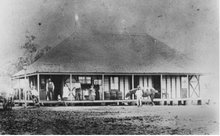Sitting quietly (for me) through the AGM of the historical society yesterday, I kept thinking of Studs Terkel. I don’t know what other people were thinking about. The local councillor sitting next to me was jiggling his leg so vigorously that the historical floor was shaking. My often chatty neighbour was looking out the door. Some people were looking at the photos that blanket the walls while others might even have been paying attention. AGMs are not the most exciting of occasions and this one didn’t even have a whiff of contention to enliven things. The executive was returned unchallenged, even myself as a lacklustre and often tardy (when I remember the meetings) vice-president. Thank goodness for the efficient, competent president, treasurer and secretary.
Anyway, the local councillor as patron of the society likes to raise ideas at this meeting about projects for the coming year. It’s worthwhile to pay attention to these ideas because they are a good indication on what council would consider spending money. This year he talked about researching the official boundaries of the Rosewood Scrub and doing up a map to be posted outside our building. He also talked about continuing an on again off again oral history project to tie in with the Cobb and Co. historical route from Ipswich to Toowoomba.
I’m not particularly interested in the Cobb and Co. route, which tends to be of the historical plaque school of history. But it is fascinating that oral history is now considered such a standard, ordinary thing that even local government in Queensland sees it as “good history.” Which by a circuitous route brings me back to Studs Terkel who died October 31 aged 96. Though criticised by some as simplistic and maudlin, Terkel was famous for believing that “The average American has an indigenous intelligence, a native wit. It’s only a question of piquing that intelligence.” He was curious, he listened and he wrote. His work gave credibility to history that drew on the lives of everyday people.
My favourite story that he tells is one that I heard him telling on National Public Radio in Minnesota. He was talking about how he likes being old because he can speak to people at bus stops and they don’t brush him off. He recounted how he asks women if they are feminists. When they (usually young women) vigorously disclaim it, he asks them if they have their own bank account, if they work, if they are able to choose whom they marry or divorce or if they use contraceptives – all things gifted to them by feminism. Though the thought of a sprightly old man accosting young women with this question is amusing, it highlights his point that people don’t know how they have got to where they are, that they live in ignorance of the lives of people in the past and they don’t appreciate what they have. I think the desire to fight against this is ingrained in every historian.
In his obituary in the New York Times, he summarises his own method as being “So I think the gentlest question is the best one, and the gentlest is, ‘And what happened then?’” It’s a good reminder for me as I think about how a local historical society can “do history” and also as I start a new research project in my other (non-writing) life. Terkel’s great skill was breaking down walls by listening to people and asking the right questions. He was eternally curious and he wanted his epitaph to be “Curiosity never killed this cat.” It’s a good motto.
Monday, 3 November 2008
Curiosity never killed this cat
Subscribe to:
Post Comments (Atom)

No comments:
Post a Comment